Ibis Oso
Wheel Size:
- Sizes Small and Medium: 29’’ front / 27.5’’ rear
- Sizes Large and XL: 29’’
Travel: 155 mm rear / 170 mm front
Material: Carbon Fiber
Price: $10,999
Claimed Weight: 53 lb / 24 kg
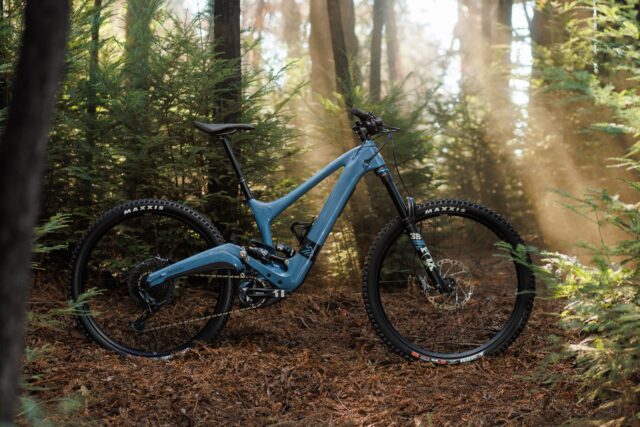
Intro
Ibis is a brand with a long-defined aesthetic and a history of interesting design details (“Handjob” cable stops, anyone?) but last week they announced an overhaul of their branding, including the retirement of their classic head badge. Along with that came a minor update to the Ripley and Ripmo, which, in addition to new logos and colors, got a SRAM UDH hanger and some minor structural updates, but it turns out that was just a precursor to the launch of their Oso e-bike today.
And it was probably good that Ibis warmed us up for some new design language, because not only does the Oso not look anything like Ibis has made before, it doesn’t look much like any other bike I can think of.
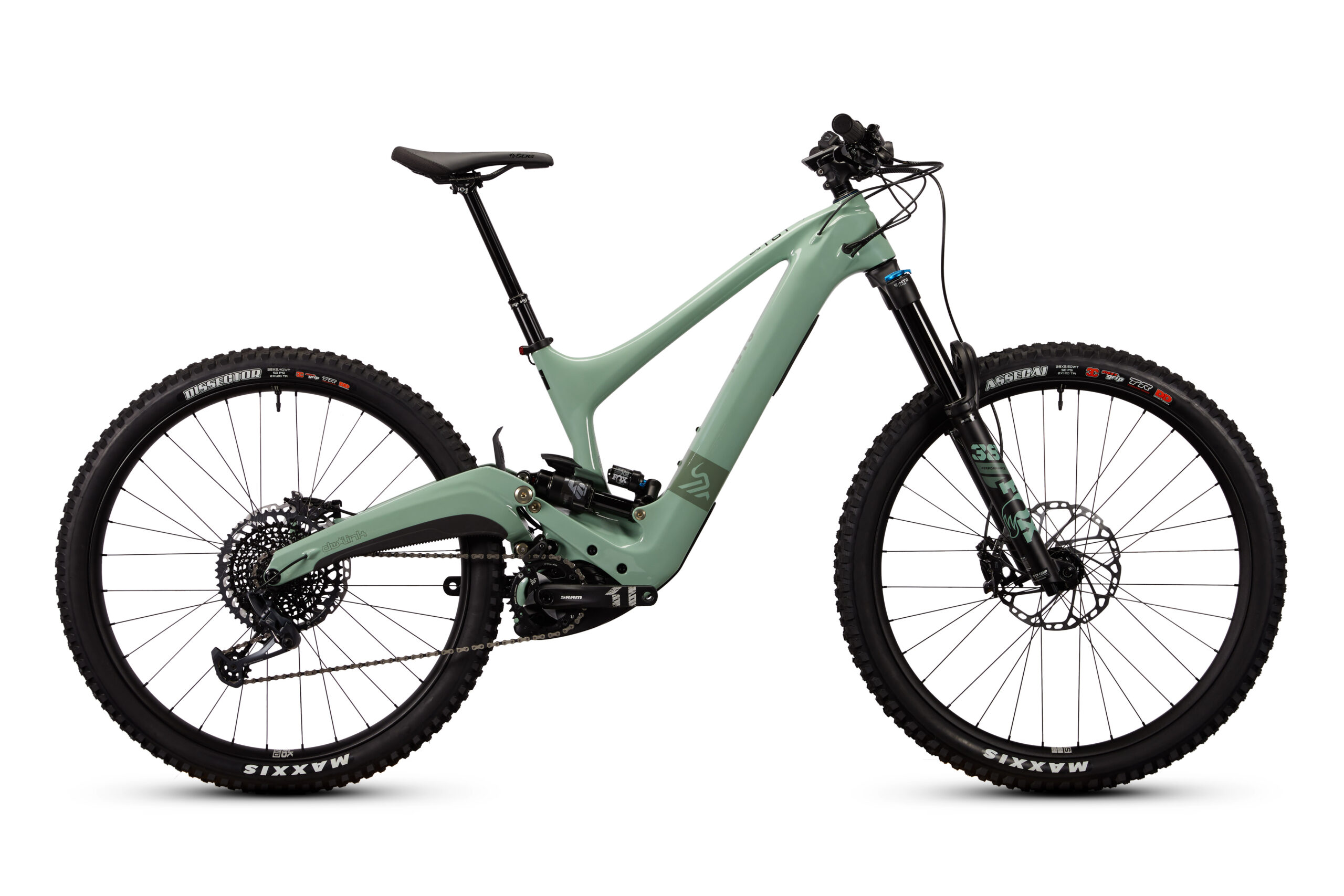
The Frame
The Oso is a wild-looking bike, and if you’d shown it to me with the logos hidden, I’d have been hard-pressed to say that it was an Ibis. A massive single-stay swingarm drives a rear shock that’s out in the open next to the single-sided seat mast (that part is a bit reminiscent of the old Specialized Demo) and the lines of the swingarm flow surprisingly cleanly through the motor mount area and into the chunky downtube that houses the battery. Ibis’ familiar ridged headtube is the best clue to the Oso’s manufacturer, but it’s more of a subtle hint than a dead giveaway.
Despite the wild looks, the Oso does still use Ibis’ familiar DW-link suspension, albeit in a substantially different arrangement than we’ve seen previously. In stock guise, the Oso frame gets 155 mm of rear-wheel travel from a 205×60 mm Trunnion-mount rear shock, but Ibis says you can bump that up to 170 mm with a 65mm-stroke version. Dual-crown forks are approved, up to 190 mm of travel (a 170 mm travel Fox 38 comes stock), and Ibis says that the Oso can be run with either an air or coil rear shock.
Ibis has also decided to split the Oso by frame size, and offer the Small and Medium frames with a 27.5’’ rear wheel in a mullet arrangement, while the Large and XL frames are dedicated 29ers. The chainstay length also varies based on the rear wheel size (more on that in a minute) and the frames are wheel size-specific — no flip chips or conversions to be found here.
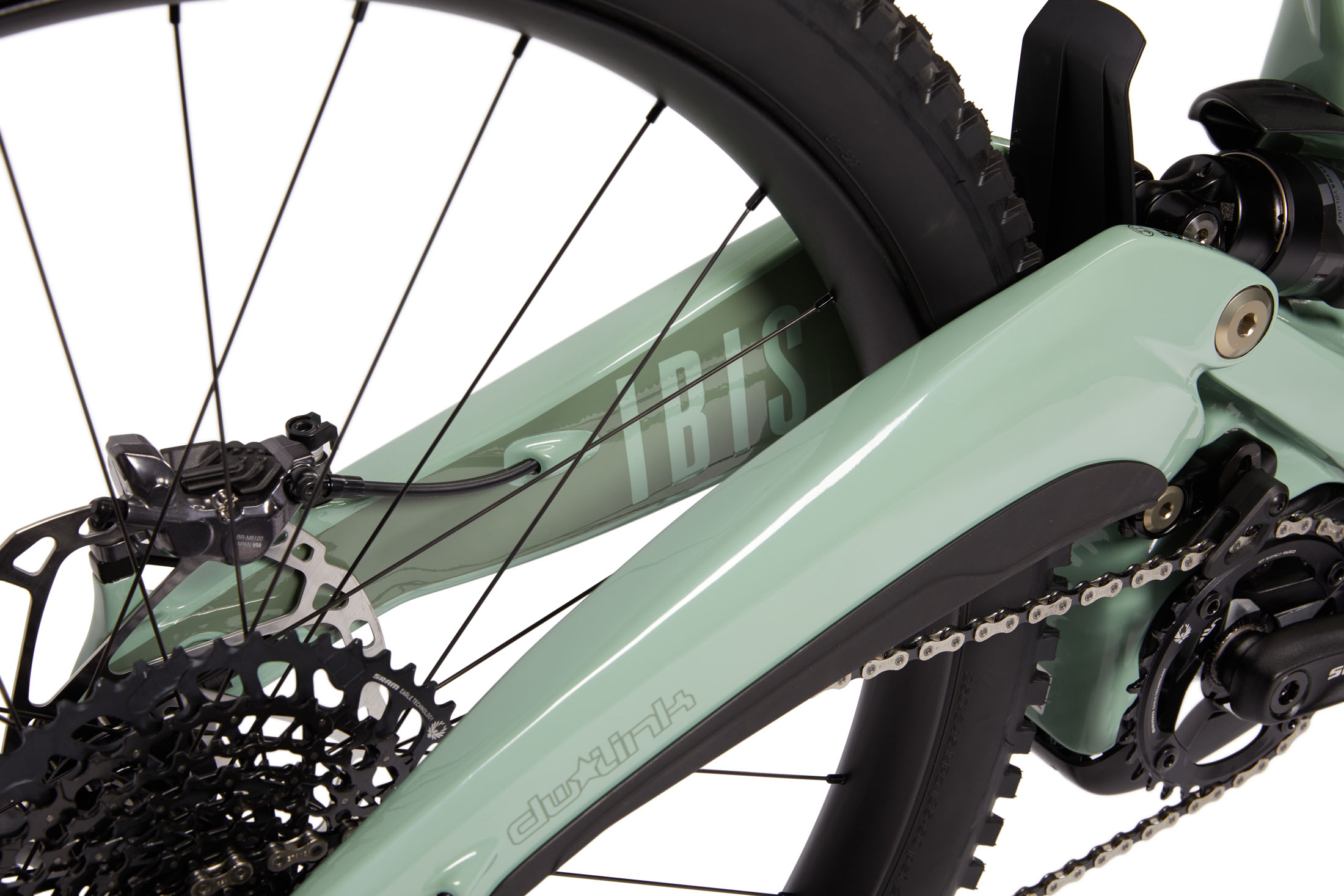
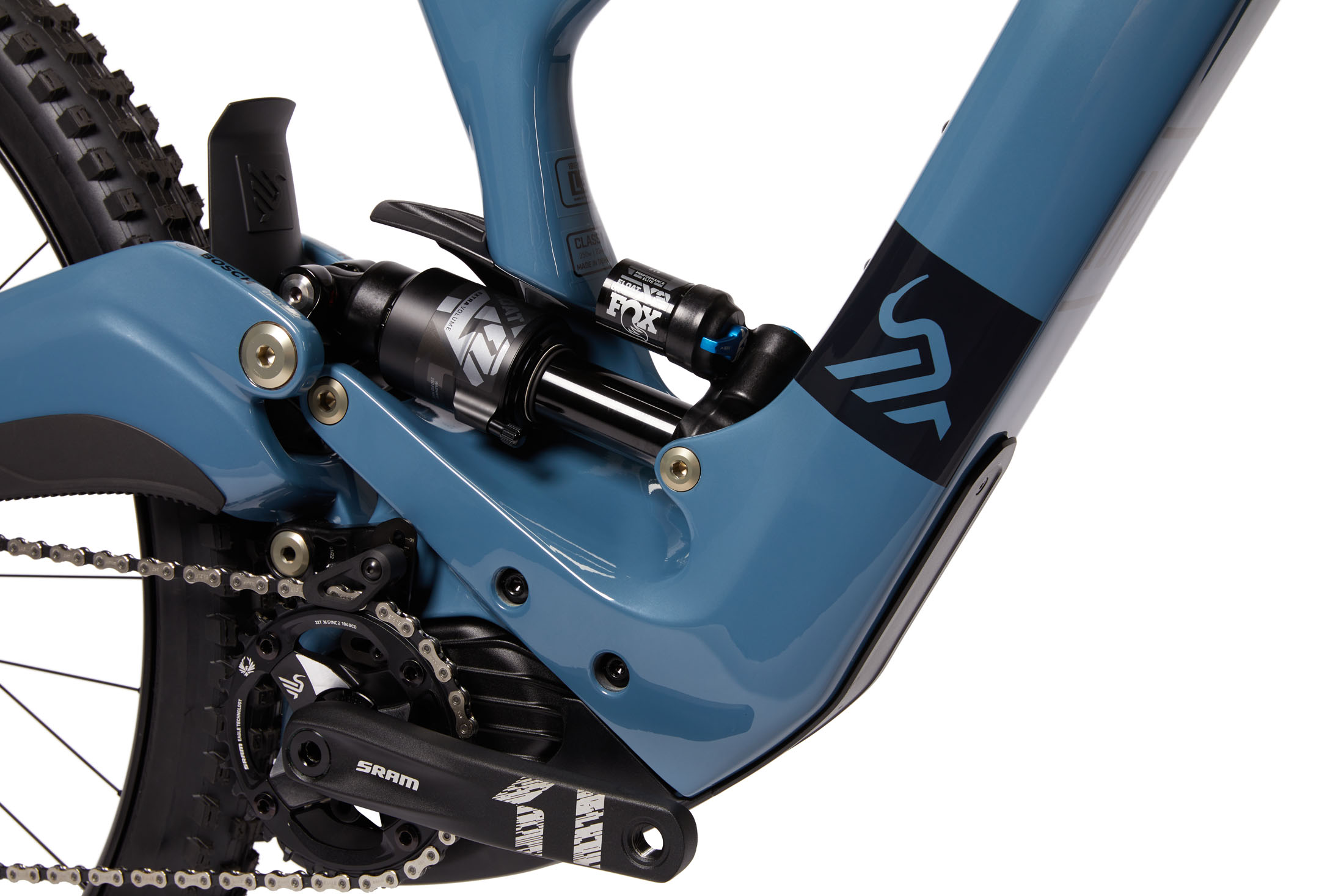
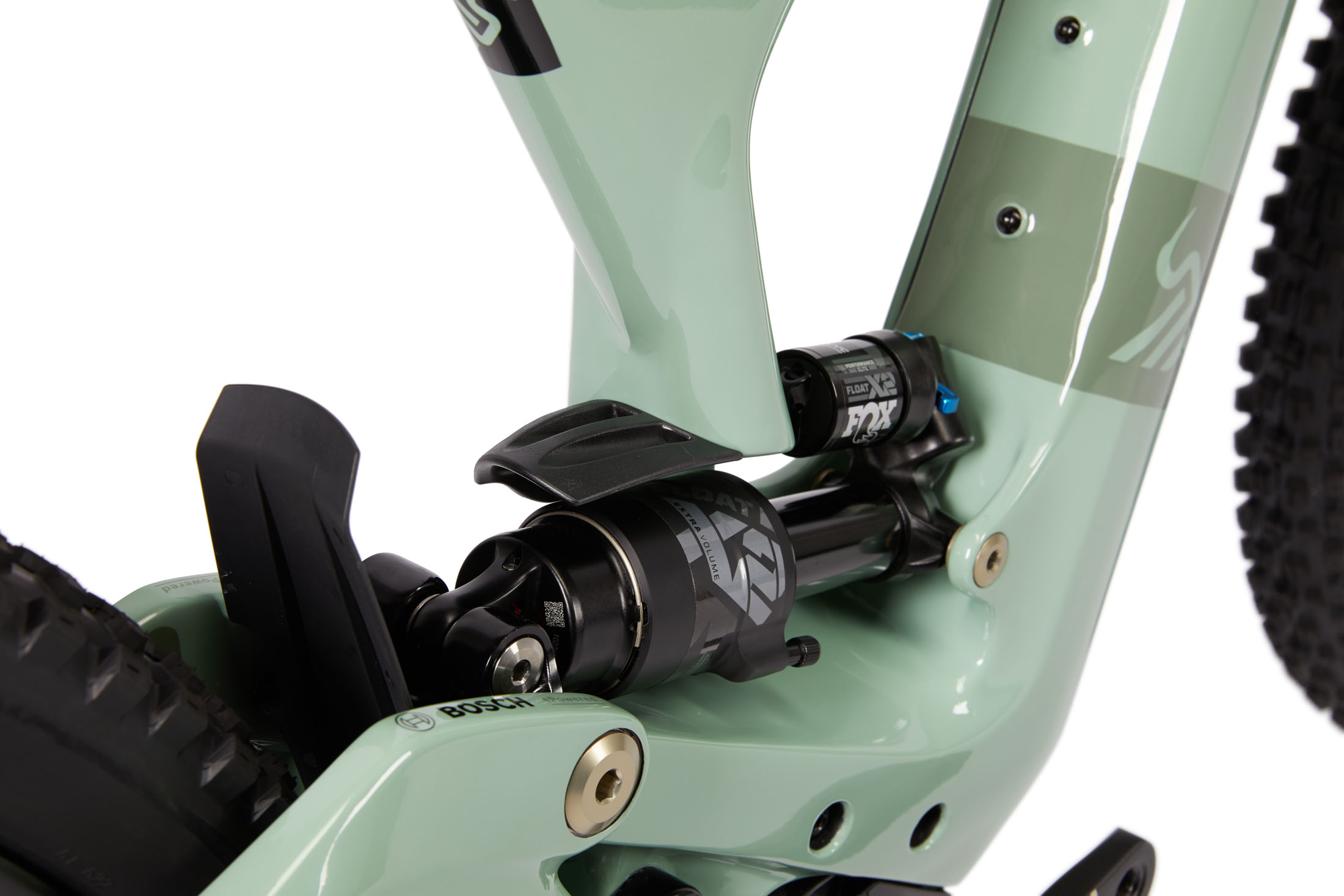

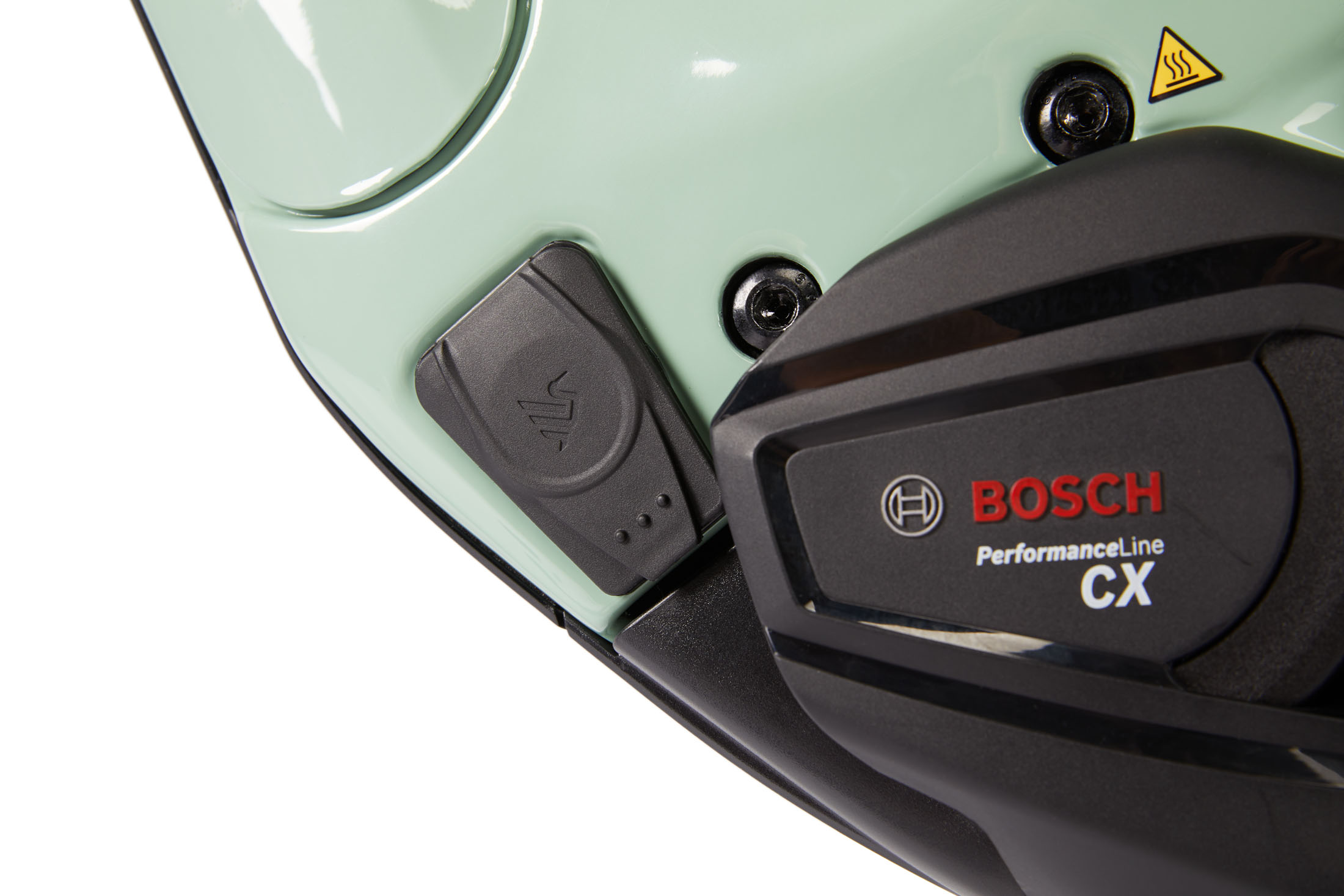
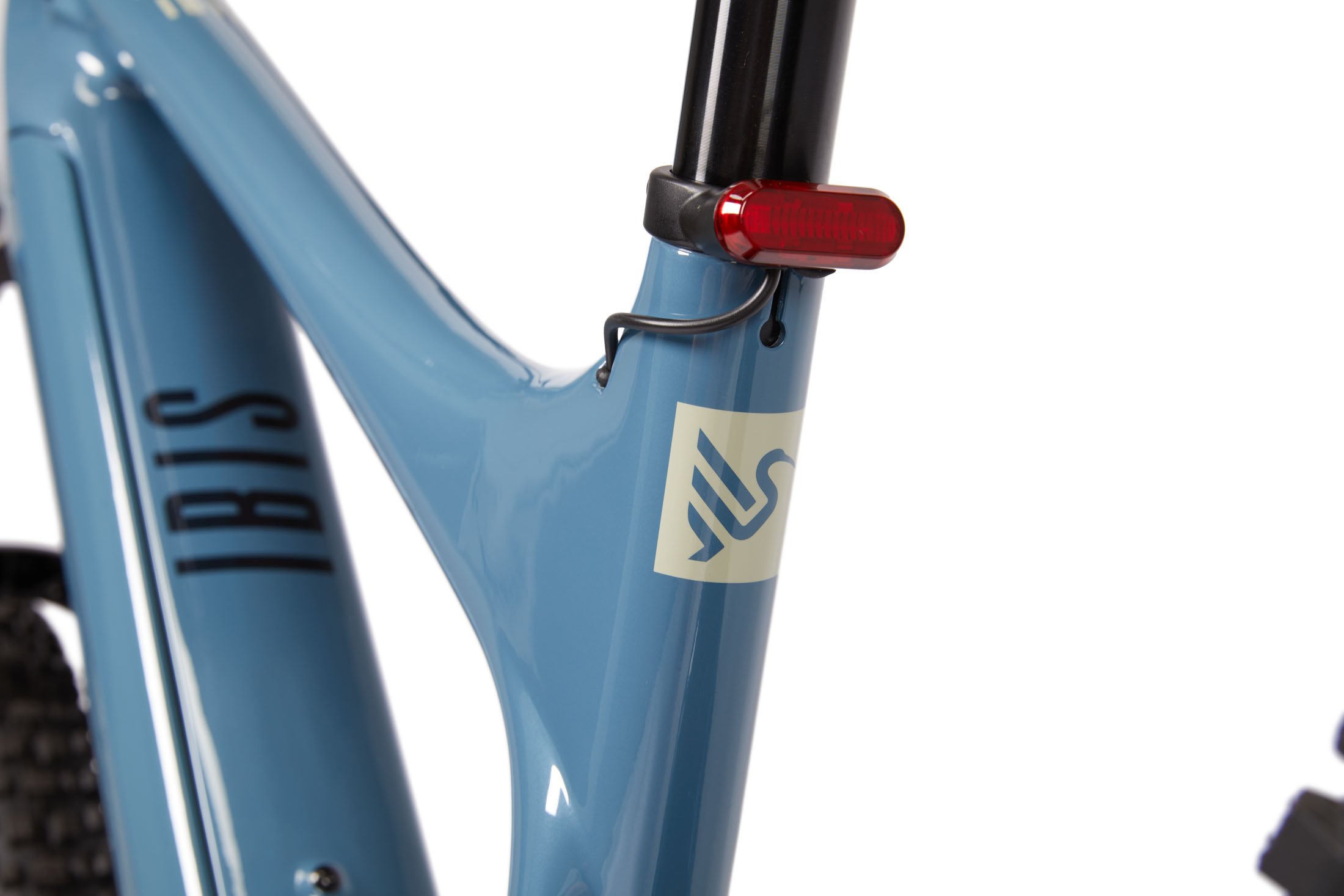
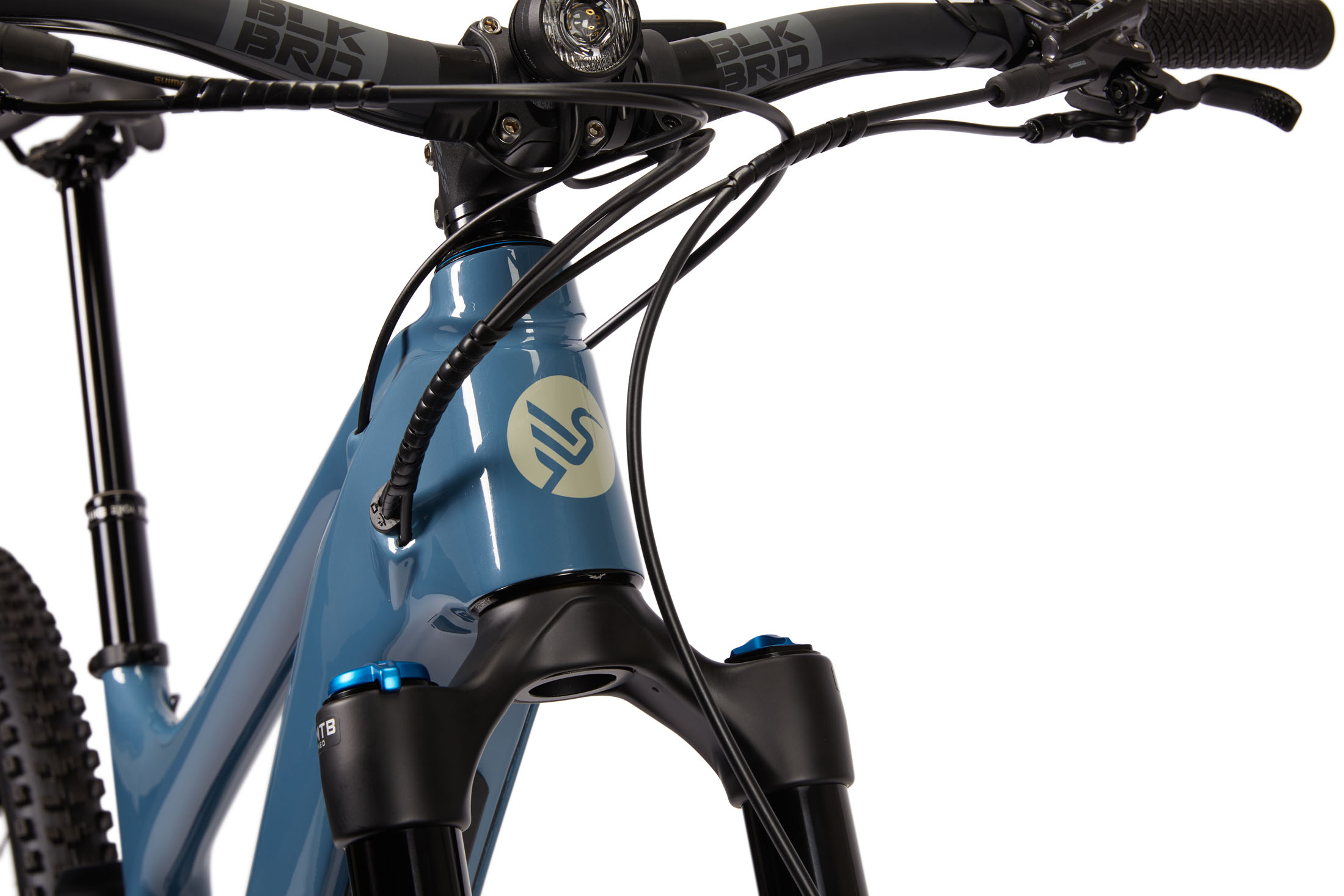


All of that is built around a Bosch Performance Line CX motor, powered by a removable 750 Wh battery on the Medium frame on up; the Small has to make do with a 625 Wh version. And then Ibis has taken the extra step of building in integrated headlights and taillights from Lupine, putting out 900 lumens up front. All of the cable routing, including that for the lights, is routed internally, and Ibis has included polycarbonate downtube and shuttle guards, a rubber guard on the underside of the swingarm to protect against chain slap, and an integrated fender to keep the shock out of the rear wheel’s line of fire. There’s room for a water bottle inside the front triangle on all sizes, though the Small frame can only clear a 21 oz one; the other sizes can accommodate a larger 26 oz bottle.
Fit & Geometry
Ibis offers the Oso in four sizes, Small through XL, with reach ranging from 430 to a whopping 540 mm; the Medium frame clocks in at 460 mm and the Large at an even 500 mm, making for some notably large jumps between sizes (but also covering an especially wide total range).
All sizes get a 64° headtube angle, but the seat tube angle steepens in the bigger sizes, with the Small and Medium frames starting at 77° and each successive size adding one degree from there. The two smaller sizes (which, again, use a 27.5’’ rear wheel) also get 439 mm chainstays, which grow to 444 mm on the two bigger ones, to go with the larger 29’’ rear wheel.
The Build
Ibis only has one build on offer for the Oso, and it’s something of a mid-tier offering with a SRAM GX drivetrain, Fox 38 Performance fork, and Ibis-branded aluminum wheels, though it clocks in at $10,999. The key points of the build are below:
- Drivetrain: SRAM GX
- Brakes: Shimano XT 4-piston w/ 220mm rotors
- Fork: Fox 38 Performance
- Shock: Fox Float X2 Performance Elite
- Wheels: Ibis Blackbird Send I / II rims w/ Ibis hubs
- Dropper Post: Bike Yoke Revive (S: 125mm; M: 160 mm; L: 185 mm; XL: 213 mm)

Some Questions / Things We’re Curious About
(1) The new Oso doesn’t look anything like an electrified Ripmo, but to what extent does it (or does it not) feel like one on the trail?
(2) And is the Oso’s wild new design language something that we’ll see carrying over to future Ibis models?
Bottom Line (For Now)
Ibis’ first e-bike is a bold departure from their conventional offerings design-wise and features significantly more aggressive geometry than we’ve seen from them before. Is this a harbinger of future non-electrified models, and how does the Oso perform on trail? We’ll just have to find out.

